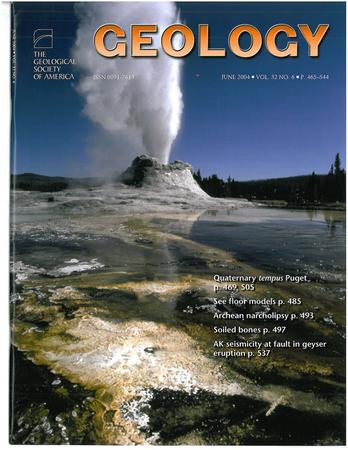Fuping Fauna: A deep-water fauna in the prime of the Great Ordovician Biodiversification Event
IF 4.6
1区 地球科学
Q1 GEOLOGY
引用次数: 0
Abstract
The Great Ordovician Biodiversification Event (GOBE) greatly enriched marine biodiversity, promoted the complexification of ecosystems, and laid the foundation for the subsequent flourishing of marine life. The discovery of Ordovician Konservat-Lagerstätten is crucial for understanding the processes and ecosystem evolution associated with the GOBE. However, most known Ordovician Konservat-Lagerstätten are derived from shallow-water environments; those from deep-water (slope-basin) settings are extremely rare. This preservational bias severely limits a comprehensive understanding of the distribution and dynamic evolution of biodiversity in the Ordovician. Here, we report the Fuping Fauna, a deep-water slope facies Konservat-Lagerstätte from the Upper Ordovician (Katian) in the southern part of the North China craton. This fauna is composed mainly of eurypterids, cheloniellids, aglaspidids, bivalved arthropods, megacheirans, cnidarians, brachiopods, molluscs, conodonts, and coprolites, representing the first Ordovician Konservat-Lagerstätte discovered in the North China craton. Its unique environment (carbonate contourites) and distinctive biological features (diverse fauna with the absence of typical Ordovician taxa, such as trilobites and graptolites) enrich our understanding of the biological assemblages and ecological niches of the Ordovician deep-water ecosystems. The discovery of the Fuping Fauna not only expands the distribution range and sedimentary environment of the Ordovician Konservat-Lagerstätten but also indicates that the deep-water fauna exhibited high ecological complexity and biodiversity in the prime of the GOBE.富平动物群:奥陶纪生物多样化盛期的深水动物群
奥陶纪生物多样性大事件(GOBE)极大地丰富了海洋生物多样性,促进了生态系统的复杂化,为随后的海洋生物繁盛奠定了基础。奥陶纪Konservat-Lagerstätten的发现对于理解与GOBE相关的过程和生态系统演化具有重要意义。然而,大多数已知的奥陶纪Konservat-Lagerstätten都来自浅水环境;那些来自深水(斜坡-盆地)环境的非常罕见。这种保存偏差严重限制了对奥陶纪生物多样性分布和动态演化的全面认识。本文报道了华北克拉通南部上奥陶统(卡田)深水斜坡相Konservat-Lagerstätte富平动物群。该动物群主要由多翼动物、甲壳动物、甲壳动物、双壳节肢动物、巨壳动物、针孔动物、腕足动物、软体动物、牙形动物和粪便动物组成,是华北克拉通最早发现的奥陶纪Konservat-Lagerstätte。其独特的环境(碳酸盐等长岩)和独特的生物特征(动物群多样,缺乏典型的奥陶纪类群,如三叶虫和笔石)丰富了我们对奥陶纪深水生态系统生物组合和生态位的认识。富坪动物群的发现不仅扩大了奥陶系的分布范围和沉积环境Konservat-Lagerstätten,而且表明该深水动物群在GOBE鼎盛时期表现出高度的生态复杂性和生物多样性。
本文章由计算机程序翻译,如有差异,请以英文原文为准。
求助全文
约1分钟内获得全文
求助全文
来源期刊

Geology
地学-地质学
CiteScore
10.00
自引率
3.40%
发文量
228
审稿时长
6.2 months
期刊介绍:
Published since 1973, Geology features rapid publication of about 23 refereed short (four-page) papers each month. Articles cover all earth-science disciplines and include new investigations and provocative topics. Professional geologists and university-level students in the earth sciences use this widely read journal to keep up with scientific research trends. The online forum section facilitates author-reader dialog. Includes color and occasional large-format illustrations on oversized loose inserts.
 求助内容:
求助内容: 应助结果提醒方式:
应助结果提醒方式:


